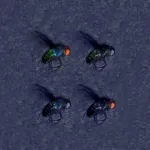New 'split-drive' system puts scientists in the (gene) driver seat
Researchers develop tunable system that harnesses the spread of cargo carried by gene drives
2021-03-05
(Press-News.org) Powerful new genetic engineering methods have given scientists the potential to revolutionize several sectors of global urgency.
So-called gene drives, which leverage CRISPR technology to influence genetic inheritance, carry the promise of rapidly spreading specific genetic traits throughout populations of a given species. Gene-drive technologies applied in insects, for example, are being designed to halt the spread of devastating diseases such as malaria and dengue by preventing mosquito hosts from becoming infected. In agricultural fields, gene-drives are being developed to help control or eliminate economically damaging crop pests.
But along with the capacity to alter populations, concerns have been raised regarding the long-term effects of these transformative new technologies in the wild. Researchers and ethicists have voiced questions about how gene drives, once turned loose in a regional population, could be held in check if necessary.
Now, researchers at the University of California San Diego, Tata Institute for Genetics and Society (TIGS) at UC San Diego and their colleagues at UC Berkeley have developed a new method that provides more control over gene drive releases. Details of the new "split drive" are published March 5 in the journals Nature Communications and eLife.
The most common gene drives employ a two-component system that features a DNA-cutting enzyme (called Cas9) and a guide RNA (or gRNA) that targets cuts at specific sites in the genome. Following the Cas9/gRNA cut, the gene drive, along with the cargo it carries, is copied into the break site through a DNA repair process.
While classic gene drives are designed to spread autonomously, the newly developed system is designed with controls that separate the genetic implementation processes. The split-drive system consists of a non-spreadable Cas9 component inserted into one location in the genome and a second genetic element that can copy itself--along with a beneficial trait--at a separate site. When both elements are present together in an individual, an "active gene drive" is created that spreads the element carrying the beneficial trait to most of its progeny. Yet, when uncoupled, the element carrying the beneficial trait is inherited under typical generational genetics rules, or Mendelian frequencies, rather than spreading unrestrained.
As described in the Nature Communications paper, by creating slight fitness costs that eventually eliminate the Cas9 enzyme from the population, the split-drive system vastly increases control and safety of the genetic deployments.
"Studying drives in essential genes is not a novel idea, per se, but we observed that certain split situations were able to spread a cargo effectively upon a first introduction while leaving no trace of Cas9 after a few generations, as well as few mistakes in the DNA repair process that got rapidly diluted out," said Gerard Terradas, first author in the Nature Communications paper and a postdoctoral scholar in the UC San Diego Division of Biological Sciences.
The Nature Communications paper also spells out advantages on how gene drives are perceived by the public, as efforts to alter wild populations could be flexibly designed in a variety of ways per the desired outcome.
The new split-drive system follows research announced in September in which UC San Diego researchers led the development of two new active genetics neutralizing strategies that are designed to halt or inactivate gene drives released in the wild.
"We hope that the flexible design features we have developed will be broadly applicable by enabling tailored approaches to controlling insect vectors and pests in diverse contexts," said UC San Diego Distinguished Professor Ethan Bier, senior author of the Nature Communications study and science director for TIGS-UC San Diego.
"These seminal papers reflect a tremendous effort, and fruitful cross-UC collaborations, to demonstrate novel gene drive architectures for mitigating the formation of resistant alleles while providing a safe confinable means for modification of wild populations," said UC San Diego Associate Professor Omar Akbari, senior author of the eLife study.
INFORMATION:
Authors of the new papers include: Gerard Terradas, Anna Buchman, Jared Bennett, Isaiah Shriner, John Marshall, Omar Akbari and Ethan Bier for the Nature Communications paper; and Nikolay Kandul, Junru Liu, Jared Bennett, John Marshall, and Omar Akbari for the eLife paper.
The research was supported by a DARPA Safe Genes Program Grant (HR0011- 17-2-0047) National Institutes of Health grants (R21RAI149161A, R01AI151004, DP2AI152071, R01GM117321), a Paul G. Allen Frontiers Group Distinguished Investigator Award and a gift from the Tata Trusts in India to TIGS-UC San Diego.
Note: Bier has equity interest in two companies he co-founded: Synbal Inc. and Agragene, Inc., which may potentially benefit from the research results. He also serves on the Synbal's board of directors and the scientific advisory board for both companies. Akbari is a co-founder, consultant, scientific advisory board member and receives income from Agragene.
[Attachments] See images for this press release:

ELSE PRESS RELEASES FROM THIS DATE:
2021-03-05
Strong, collaborative relationships with principal investigators are a key factor of longevity in clinical research coordinator positions -- an essential, but increasingly transient job in executing treatment-advancing clinical trials, Vanderbilt University Medical Center researchers found.
Danielle Buchanan, BS, clinical translational research coordinator III in the Department of Neurology, and Daniel Claassen, MD, MS, chief of the Division of Cognitive Disorders and associate professor of Neurology, found the top factor for retention is a close working relationship between clinical research coordinators (CRCs) and the study's principal investigator that emphasizes respect and collaboration. Salary followed as the next factor for retention among 85 former or current CRCs who responded to ...
2021-03-05
Egg cells are by far the largest cells produced by most organisms. In humans, they are several times larger than a typical body cell and about 10,000 times larger than sperm cells.
There's a reason why egg cells, or oocytes, are so big: They need to accumulate enough nutrients to support a growing embryo after fertilization, plus mitochondria to power all of that growth. However, biologists don't yet understand the full picture of how egg cells become so large.
A new study in fruit flies, by a team of MIT biologists and mathematicians, reveals that the process through which the oocyte ...
2021-03-05
The global population is aging, and so are their eyes. In fact, the number of people with vision impairment and blindness is expected to more than double over the next 30 years. ...
2021-03-05
Scientists at Walter Reed Army Institute of Research, in a collaboration the Duke University, have confirmed that monoclonal antibodies can be an effective tool in the global fight against malaria.
The study, led by Dr. Sheetij Dutta, chief of the Structural Vaccinology Laboratory at WRAIR, showed that mAbs such as CIS43 were most effective in a culture-based assay that measured a malaria parasite's ability to infect a human liver cell, while another mAb 317 showed the best activity in a mouse infection model. Dutta added, "difference in assay outcomes for mAbs could reflect distinct sites on the circumsporozoite protein, that can be exploited for developing improved vaccines." The study results were published today in in Nature Scientific Reports.
Despite decades ...
2021-03-05
If you are going to buy a face mask to protect yourself and others from COVID-19, make sure it's a three-layered mask. You might have already heard this recommendation, but researchers have now found an additional reason why three-layered masks are safer than single or double-layered alternatives.
While this advice was originally based on studies that showed three layers prevented small particles from passing through the mask pores, researchers have now shown that three-layered surgical masks are also most effective at stopping large droplets from a cough or sneeze from getting atomized into smaller droplets. These large cough droplets can penetrate through the single- and double-layer masks and atomize to much smaller droplets, ...
2021-03-05
Mount Sinai Researchers find a new way to prevent attention deficits associated with Fragile X, a leading genetic cause of autism, in an animal model
Corresponding Author: Hirofumi Morishita, MD, PhD, Department of Psychiatry, Neuroscience, Friedman Brain Institute, Mindich Child Health and Development Institute, Icahn School of Medicine at Mount Sinai, New York.
Bottom Line: The adolescent maturation of the frontal cortex is important for establishing cognitive function, and disruption of this process is associated with neurodevelopmental disorders. This study uncovered a new molecular driver of frontal circuit maturation that is essential ...
2021-03-05
ORLANDO, March 5, 2021 - Nuisance flooding has increased on U.S. coasts in recent decades due to sea level rise, and new research co-authored by the University of Central Florida uncovered an additional reason for its added frequency.
In a study appearing today in the journal Science Advances, researchers show that higher local tide ranges, most likely from human alterations to coastal areas and estuaries, has increased the number of nuisance flooding days in many coastal locations in the U.S.
Coastal nuisance flooding is considered to be minor flooding from the seas that causes problems such as flooded roads and ...
2021-03-05
Could cactus pear become a major crop like soybeans and corn in the near future, and help provide a biofuel source, as well as a sustainable food and forage crop? According to a recently published study, researchers from the University of Nevada, Reno believe the plant, with its high heat tolerance and low water use, may be able to provide fuel and food in places that previously haven't been able to grow much in the way of sustainable crops.
Global climate change models predict that long-term drought events will increase in duration and intensity, resulting in both higher temperatures and lower levels of available water. Many crops, such as rice, corn and soybeans, have an upper temperature limit, and ...
2021-03-05
In early 2016, an icy visitor from the edge of our solar system hurtled past Earth. It briefly became visible to stargazers as Comet Catalina before it slingshotted past the Sun to disappear forevermore out of the solar system.
Among the many observatories that captured a view of this comet, which appeared near the Big Dipper, was the Stratospheric Observatory for Infrared Astronomy (SOFIA), NASA's telescope on an airplane. Using one of its unique infrared instruments, SOFIA was able to pick out a familiar fingerprint within the dusty glow of the comet's tail--carbon.
Now this one-time visitor to our inner solar system is helping explain ...
2021-03-05
When stay-at-home orders were announced as one of the greatest tools in our arsenal against the COVID-19 pandemic, anyone who's vintage enough to have watched forward-looking shows and movies-- from "The Jetsons" to "Star Trek" to "Back to the Future" -- might have thought America was ready to embrace a world where video calling and other tech-heavy communication options reigned supreme.
But one year, dozens of Zoom meetings, hundreds of phone calls and text messages, thousands of online gaming hours, and millions of social media posts later, new research led by UNLV has ...
LAST 30 PRESS RELEASES:
[Press-News.org] New 'split-drive' system puts scientists in the (gene) driver seat
Researchers develop tunable system that harnesses the spread of cargo carried by gene drives






